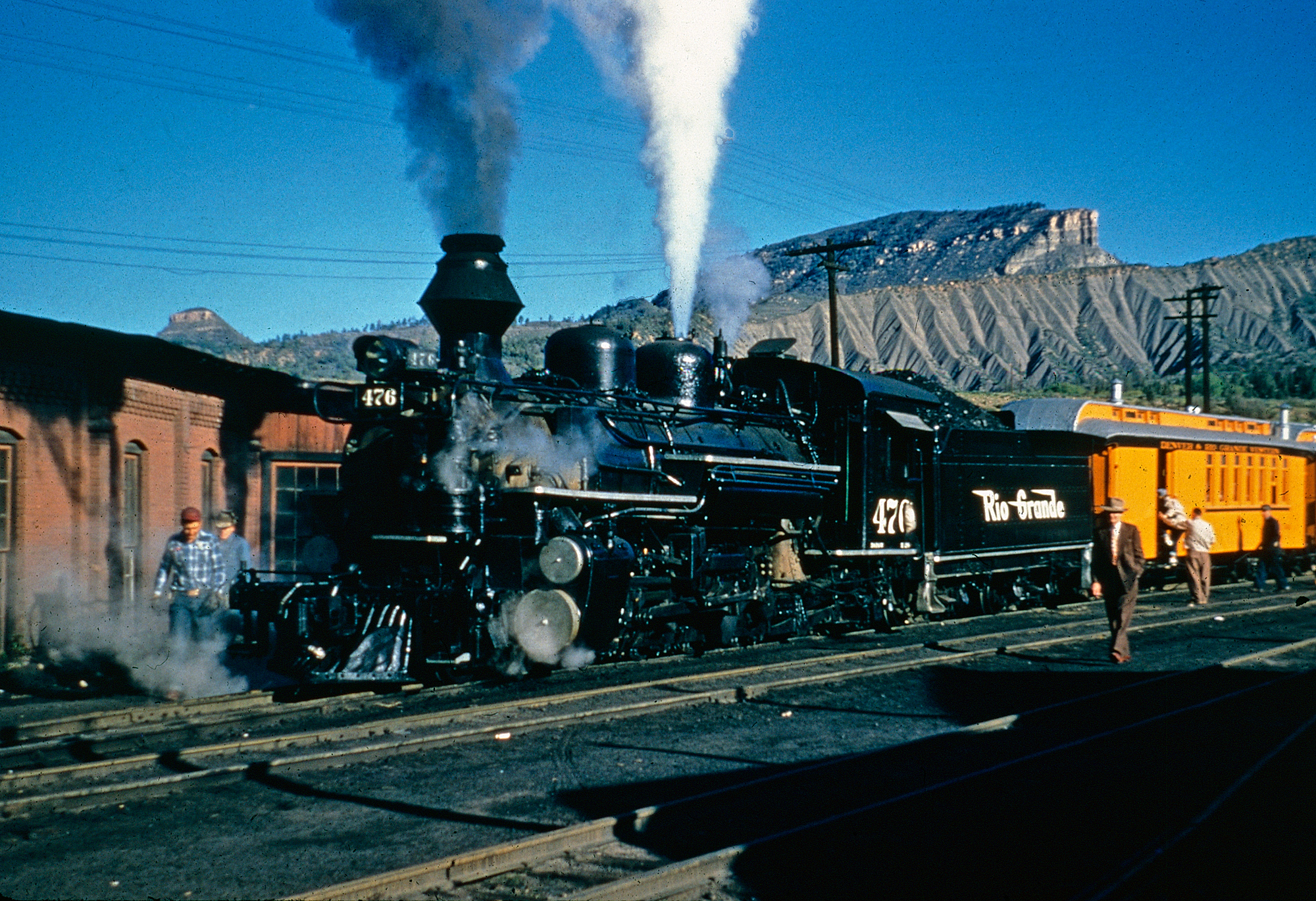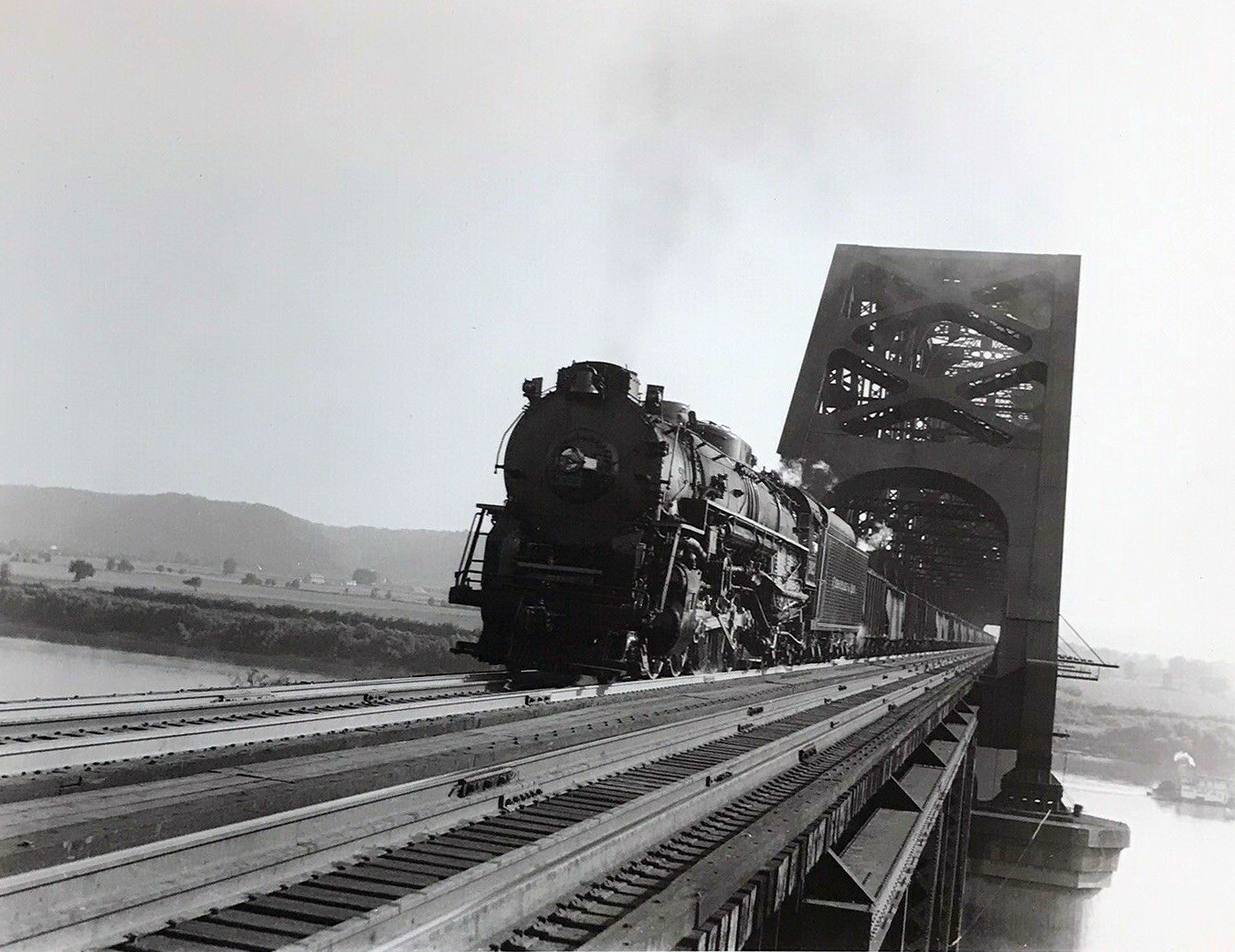The Trainphone: PRR's Wireless Radio System
Published: July 2, 2024
By: Adam Burns
During the early to mid-20th century, the Pennsylvania Railroad (PRR) was renowned for its technological innovation and operational efficiency.
Among its many groundbreaking advancements, the PRR developed the Trainphone system, a unique and pioneering communication technology designed to enhance the safety and efficiency of railroad operations.
This article delves into the intricacies of the Trainphone system, exploring its development, functionality, operational impact, and legacy.
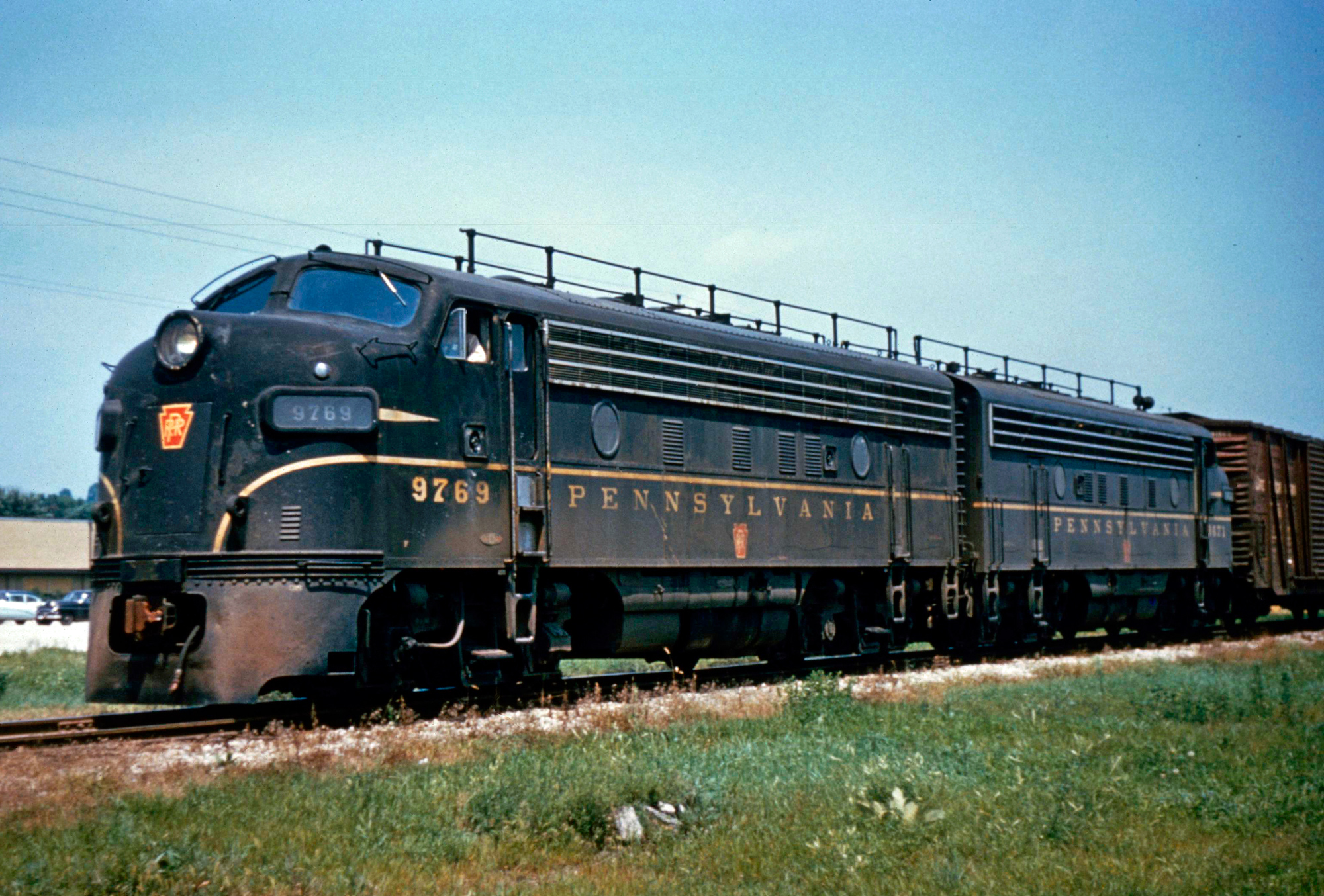 A handsome set of Pennsylvania F7As sporting the classic Trainphone antennas along the roofline. American-Rails.com collection.
A handsome set of Pennsylvania F7As sporting the classic Trainphone antennas along the roofline. American-Rails.com collection.The Need for Better Communication
Before the advent of advanced communication technologies, railroad operations heavily relied on visual signals, telegraphy, and written orders. These methods, while effective to an extent, had significant limitations, particularly in terms of real-time communication.
The lack of direct communication between train crews, dispatchers, and station agents posed risks, especially during emergencies, and hindered operational efficiency.
Recognizing these challenges, the PRR sought a solution that would allow seamless, real-time communication between moving trains and static points such as dispatch centers and stations. The goal was to enhance safety, improve coordination, and streamline railroad operations.
Development of the Trainphone System
The development of the Trainphone system began in the late 1930s, spearheaded by the PRR’s engineering team.
The core concept was to create a reliable voice communication system that could function effectively in the challenging environment of a moving train where conventional radio frequencies could encounter severe interference from overhead electrical catenaries and metal structures.
A key innovation of the Trainphone system was its reliance on inductive coupling instead of traditional radio waves.
Inductive coupling involved the use of electromagnetic induction to transmit signals, allowing communication without the need for direct wire connections. This technology offered a more stable and reliable means of communication, less susceptible to the interference that plagued early radio systems.
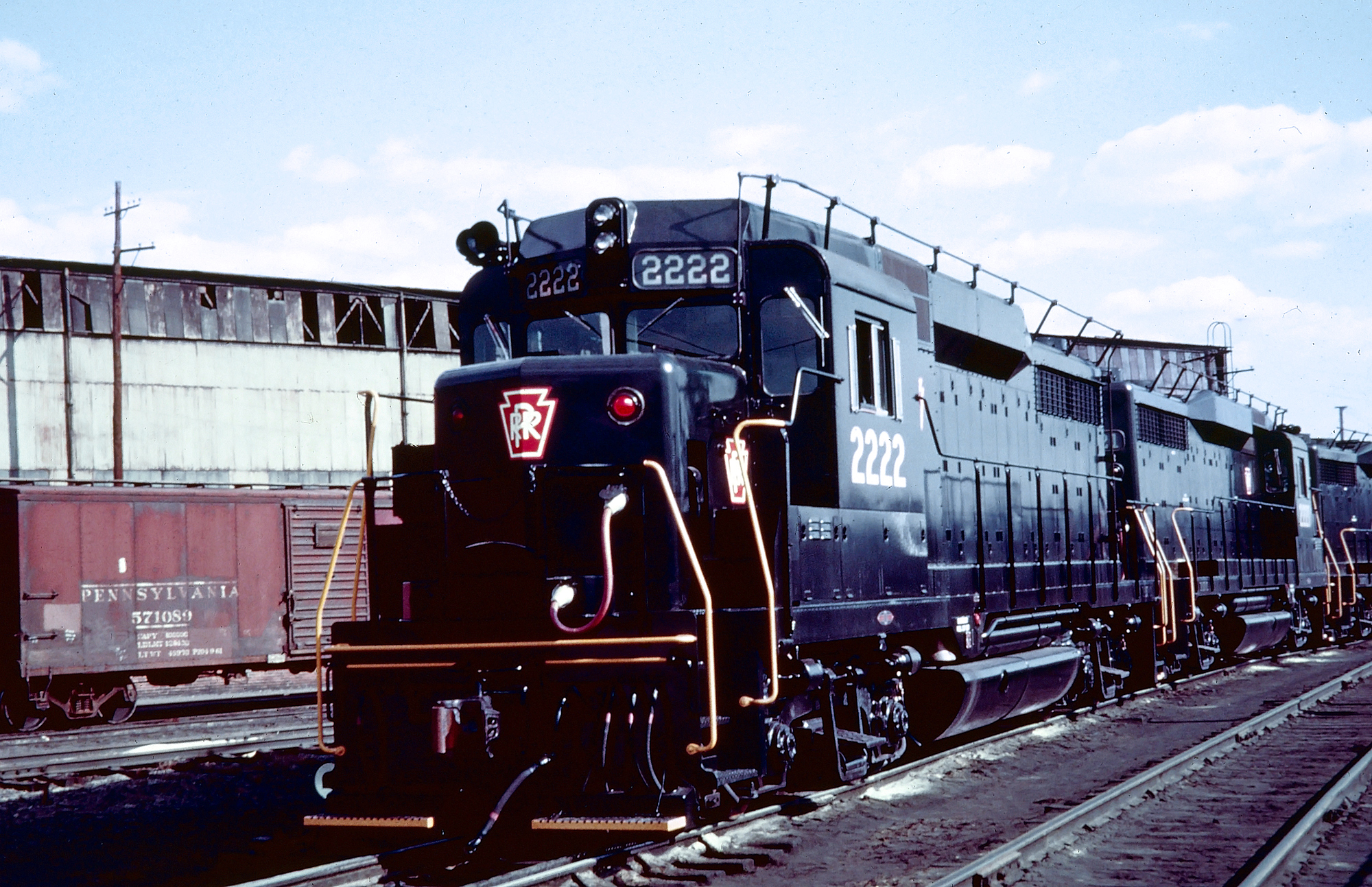 Even into the early 1960s the PRR was still equipping new locomotives with the Trainphone. Seen here are recently delivered GP30s, with #2222 closest to the photographer, at Enola, Pennsylvania in April of 1963. Fred Byerly photo. American-Rails.com collection.
Even into the early 1960s the PRR was still equipping new locomotives with the Trainphone. Seen here are recently delivered GP30s, with #2222 closest to the photographer, at Enola, Pennsylvania in April of 1963. Fred Byerly photo. American-Rails.com collection.How The System Worked
The Trainphone system utilized a combination of specialized equipment installed on locomotives, cabooses, and stationary points along the railway. Here’s a breakdown of how the system functioned:
1. **Induction Loop Antennas**: Each locomotive or caboose equipped with the Trainphone system featured induction loop antennas mounted along the roofline. These antennas created an electromagnetic field around the train, enabling the transmission and reception of signals through inductive coupling.
2. **Base Stations**: To facilitate communication between trains and fixed locations, base stations with similar induction loop antennas were strategically placed along the rail network. These base stations were often located at key points such as busy junctions or dispatch centers.
3. **Carrier Frequencies**: The system operated using specific carrier frequencies, typically in the low-frequency range, to transmit voice communication. The use of low frequencies helped mitigate interference from overhead electrical lines and other sources.
4. **Trainphone Receivers and Transmitters**: Onboard equipment included Trainphone receivers and transmitters, which converted voice signals into electromagnetic waves for transmission through the induction loop and vice versa. Train crews used handset devices for direct communication.
5. **Communication Protocols**: The Trainphone system employed structured communication protocols, ensuring clear and efficient exchanges between train crews and dispatchers. Standardized procedures and codes were developed to manage common situations and emergencies.
Operational Implementation and Impact
The PRR first tested the system in 1936 and spent a number of years improving the concept before deeming it ready for service by 1943.
Afterward, the railroad began implementing the system across its extensive rail network through the early 1950s. The system’s deployment marked a significant advancement in railroad communication, providing several key benefits:
1. **Enhanced Safety**: Real-time communication allowed for immediate dissemination of critical information, such as changes in track conditions, signal status, and emergency alerts. This significantly reduced the risk of accidents and collisions.
2. **Improved Coordination**: Disjointed operations and delays due to miscommunication were minimized. Dispatchers could coordinate train movements more efficiently, optimizing scheduling and reducing bottlenecks.
3. **Operational Efficiency**: The ability to communicate directly with train crews enabled quicker decision-making and problem-solving. Situations that previously required halting the train for telegraph or written orders could now be resolved in motion.
4. **Emergency Response**: In emergencies, such as mechanical failures or medical incidents, immediate communication with dispatchers or nearby stations facilitated rapid response and assistance.
5. **Training and Use**: PRR invested in training programs to ensure that train crews and dispatchers were proficient in using the Trainphone system. This included familiarization with the equipment, communication protocols, and emergency procedures.
Legacy and Technological Transition
The Trainphone was a pioneering effort that demonstrated the potential of inductive coupling for reliable communication in challenging environments. Though it was eventually phased out as more advanced radio communication technologies became available, the system’s impact lasted long after its heyday.
**Advancements in Radio Communication**: By the 1960s and 1970s, advancements in VHF and UHF radio technologies provided more efficient and versatile communication options for railroads. These newer systems could offer clearer voice transmission, wider coverage, and greater flexibility.
**Technological Influence**: The principles of inductive coupling explored by the Trainphone system influenced later developments in communication technologies. The concept found applications in various fields, from telecommunications to consumer electronics.
**Historical Significance**: The Trainphone system remains a testament to the PRR’s commitment to innovation and safety. It exemplifies the proactive approach railroads took in addressing operational challenges through advanced technology.
**Modern Railroad Communication**: Today, sophisticated digital communication systems, including satellite-based GPS, mobile networks, and computerized dispatching, have supplanted earlier technologies. However, the foundational goals of enhancing safety, coordination, and efficiency remain unchanged.
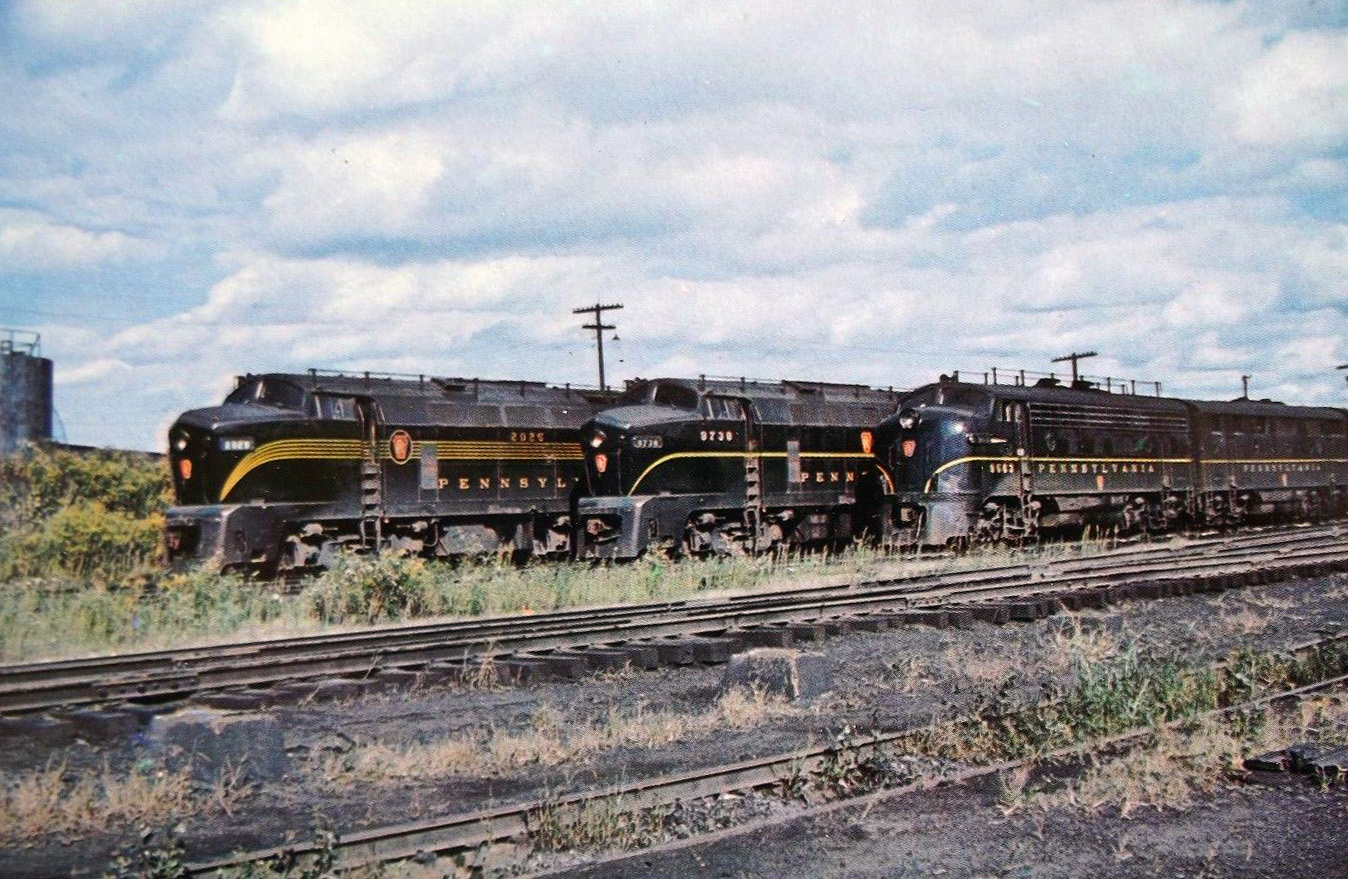 Most of Pennsy's road locomotives were equipped with the Trainphone. Seen here are RF16 "Sharks" and an F7A-F3B set, all sporting the Trainphone, at Erie, Pennsylvania during October of 1958. William Volkmer photo.
Most of Pennsy's road locomotives were equipped with the Trainphone. Seen here are RF16 "Sharks" and an F7A-F3B set, all sporting the Trainphone, at Erie, Pennsylvania during October of 1958. William Volkmer photo.Conclusion
The Pennsylvania Railroad's Trainphone represents a remarkable chapter in the history of railroad communication. Developed to address the unique challenges of real-time train communication, the Trainphone utilized innovative inductive coupling technology to provide reliable voice communication between moving trains and fixed points.
By significantly enhancing safety, operational efficiency, and coordination, the system left an indelible mark on the rail industry. While it was eventually overtaken by more advanced radio technologies, its legacy endures in the principles and goals that continue to drive innovation in railroad communication today.
The Trainphone stands as a tribute to the ingenuity and foresight of the Pennsylvania Railroad, illustrating how cutting-edge technology can transform industry practices and pave the way for future advancements. The spirit of innovation exemplified by the Trainphone endures as an inspiration for ongoing progress in the field of transportation and communication.
Recent Articles
-
Rio Grande 2-8-2 Locomotives (Class K-28): Specs, Roster, Photos
Apr 14, 25 10:24 PM
Rio Grande's Class K-28 Mikados were its newest narrow-gauge steam locomotives since the Mudhens of the early 1900s. Today, three survive. -
Rio Grande K-27 "Mudhens" (2-8-2): Specs, Roster, Photos
Apr 14, 25 05:40 PM
Rio Grande's Class K-27 of 2-8-2s were more commonly referred to as Mudhens by crews. They were the first to enter service and today two survive. -
C&O 2-10-4 Locomotives: Specs, Roster, Photos
Apr 13, 25 04:07 PM
Chesapeake & Ohio's T-1s included a fleet of forty 2-10-4 "Texas Types" that the railroad used in heavy freight service. None were preserved.
